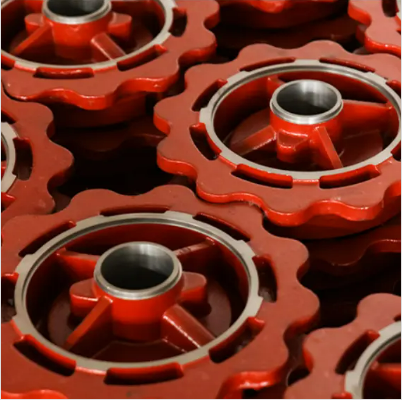Mobile:+86-311-808-126-83
Email:info@ydcastings.com
Design and Performance Analysis of Small Engine Exhaust Manifolds for Improved Efficiency and Emissions Control
Understanding Small Engine Exhaust Manifolds
Small engine exhaust manifolds are crucial components in many engines, particularly in those found in lawn mowers, motorcycles, small tractors, and various types of industrial equipment. These manifolds play an essential role in channeling exhaust gases away from the engine, ensuring optimal performance, efficiency, and reduced emissions. In this article, we will explore the purpose, design, materials, and maintenance of small engine exhaust manifolds.
Purpose and Functionality
The primary function of an exhaust manifold is to collect exhaust gases from multiple cylinders and direct them into a single exhaust outlet. In small engines, this is particularly important as the exhaust design directly impacts the engine's performance. A well-designed exhaust manifold helps maintain the right back pressure, which is crucial for engine efficiency and power output. It also facilitates smoother exhaust flow, reducing turbulence that can lead to power loss.
Additionally, the exhaust manifold helps in controlling engine temperature. By efficiently channeling hot exhaust gases away from the engine, it prevents overheating, which can lead to premature engine wear or failure. Proper thermal management is especially critical in small engines that operate under varying load conditions, such as in lawn equipment or recreational vehicles.
Design Considerations
The design of small engine exhaust manifolds can vary significantly depending on the engine's specific requirements. Factors such as engine size, number of cylinders, and intended application influence the manifold's shape and layout. Most small engine exhaust manifolds are cast in a way that optimizes space while ensuring that the exhaust gases can flow freely.
One common design is the log manifold, which has a simple, straight structure that minimizes complexity and cost. However, more advanced designs might incorporate multiple pathways to improve flow dynamics, especially in high-performance applications. The goal of these designs is to reduce exhaust back pressure while maximizing the scavenging effect, which helps draw exhaust gases out of the cylinders more efficiently.
small engine exhaust manifold

Materials Used
Small engine exhaust manifolds are typically made from materials that can withstand high temperatures and resist corrosion. Cast iron has traditionally been the go-to material due to its durability and heat-resistant properties. However, advances in technology have led to the use of other materials, such as stainless steel and aluminum, which can offer benefits like reduced weight and enhanced heat dissipation.
The choice of material not only affects the manifold's performance but also its longevity. For instance, aluminum manifolds can be lighter, making them preferable in portable applications where weight is a concern, while stainless steel offers superior corrosion resistance, making it ideal for environments exposed to moisture and chemicals.
Maintenance and Care
To ensure the longevity and performance of small engine exhaust manifolds, regular maintenance is key. Operators should inspect the manifold for signs of cracks, rust, or other damage on a routine basis. Any exhaust leaks can lead to decreased engine performance and can also pose safety hazards due to the inhalation of harmful exhaust gases.
Additionally, cleaning the manifold and the connected exhaust systems can help prevent blockages that can lead to increased pressure and overheating. Proper tightening of bolts and connections during routine service can also prevent leaks and maintain a secure fit.
Conclusion
In summary, the small engine exhaust manifold is a vital component that impacts the overall performance and efficiency of small engines. Understanding its purpose, design, and maintenance needs can help users ensure their engines operate smoothly and effectively. Whether for recreational use or industrial applications, taking care of the exhaust manifold will contribute significantly to the engine's longevity and operational reliability.
-
Understanding Metal Casting TechniquesNewsApr.02,2025
-
Understanding Exhaust Manifolds for Enhanced Engine PerformanceNewsApr.02,2025
-
The World of Metal FabricationNewsApr.02,2025
-
Key Components for Pump and Turbo EfficiencyNewsApr.02,2025
-
Essential Tools for Automotive Maintenance and RepairNewsApr.02,2025
-
Durable Valve Components for Effective Water ManagementNewsApr.02,2025











